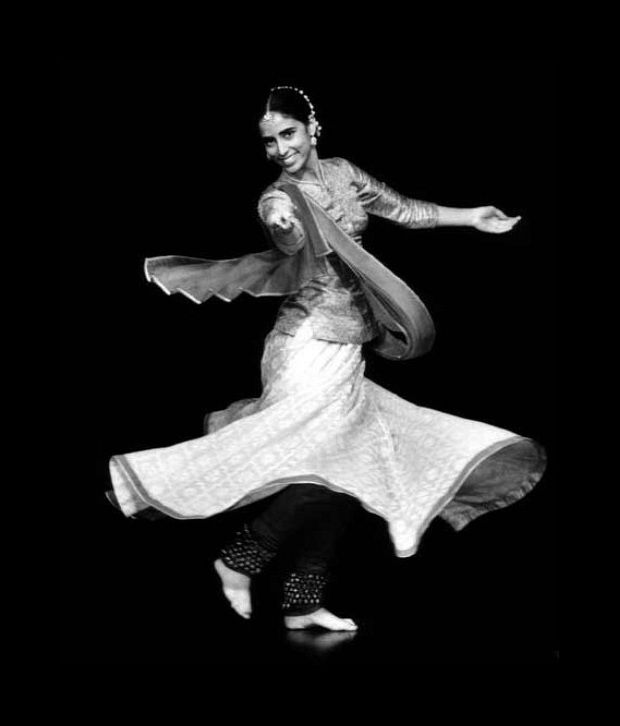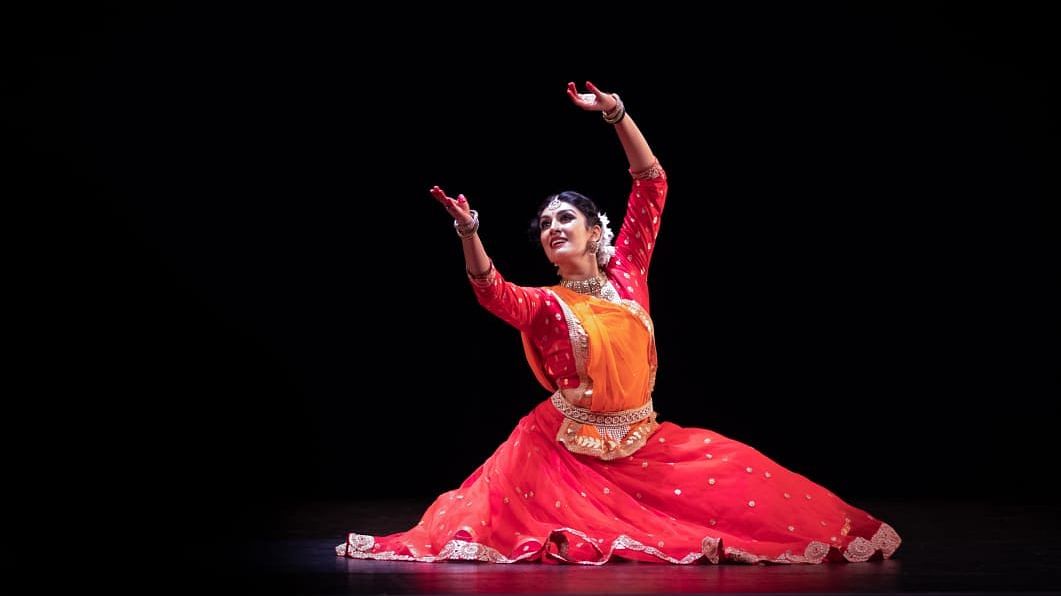

Kathak is one of the only art forms with both Hindu and Muslim roots.

Kathak, like all Indian Classical Dance, has distinct devotional elements as it once was performed in temples. Historically, Kathakas were hereditary wandering bards illuminating epics through dance, mime, poetry, song and music. It takes a lifetime to make a Kathak master. To be a kathak artist requires maturity and ongoing exploration. With the complex web of anubhava and laykari, a dancer can spend a lifetime exploring, reaching, and refining. Within each of these are minute nuances, called anubhava, and are myriad in interpretation. Given that the emotional nuances of kathak are very important, (after-all, kathak comes from the word ‘katha’ meaning to tells stories, so the kathaka is the storyteller) the nava rasa or nine emotional sentiments are a boundless source of exploration: love, peace, sorrow/ pathos, disgust, humor, wonder, terror/fear, anger, and heroism. nazakut, delicacy, or refinement, in the dance.tayari, the technical readiness with the movement vocabulary of the dance.

It takes decades of reyaz (disciplined practice and refinement) and sadhana (practice which is a spiritual practice). Kathak is traditionally learned through the guru- shisya parampara. Enthralled by the immense depth and potential for self-expression, I continued to study in the traditional manner (guru shisya parampara), one on one, as well as in the class, the rehearsal setting, and while accompanying Pandit Das around the world. Little did I know the vast ocean that lay before me. In 1992, I enrolled in a Kathak class at SFSU with world-renowned master, Pandit Chitresh Das. Kathak is a unique dance form which incorporates rhythmic virtuosity, compelling storytelling, poetry, recitation, song, swift and subtle movement, and a rich philosophy whose roots extend thousands of years.


 0 kommentar(er)
0 kommentar(er)
